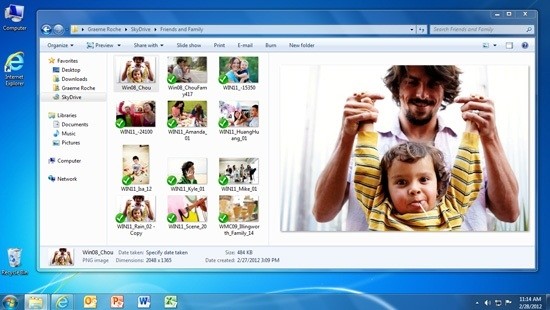Google is expected launch its cloud storage service any time now and Microsoft's competing service SkyDrive received a major overhaul to prepare for battle. Similar to Dropbox, Skydrive now has dedicated apps for Windows and OS X, which integrate right into the OS by creating a folder where users can drag-and-drop files and have them automatically uploaded to their online lockers and synchronized accross devices.
The move essentially combines the product part of Microsoft's consumer cloud strategy (Live Mesh) with the service side (SkyDrive) to offer a simplified cloud storage solution. Not all of Mesh's features have been incorporated into the new client, however, and the amount of storage offered for free to new users has been cut down from 25GB to 7GB, with paid options at $10, $25 and $50 per year for 20GB, 50GB or 100GB.

That's still not a bad deal considering rival services such as Dropbox charge $99 or $199 a year for 50GB or 100GB of storage, respectively. Furthermore, any users that signed up for SkyDrive before April 22 and have uploaded at least one file to the service, can get a free upgrade to 25GB by going to the Manage Storage page at SkyDrive.com. Existing users with at least 4GB uploaded will pick up the 25GB update automatically.
Microsoft also updated its SkyDrive apps for Windows Phone and iOS, and of course, you can still get access to your files anytime from any computer by signing in to SkyDrive.com using a browser.
Another key feature is the ability to remotely "fetch" files that are outside of the SkyDrive folder on any Windows PC. As long as the computer is on and running SkyDrive, you can browse and access any file on your disk from anywhere (after a two-step authentication process), just like you would if you were sitting in front of that PC.
It's unclear if Microsoft’s Live Mesh service will be shut down as customers transition to SkyDrive and if other features, like the ability to sync Internet Explorer settings, will be ported over to the new client.
You can download the new Skydrive client apps for Windows and OS X here.